Το μάθημα αποσκοπεί στην κατανόηση από την πλευρά των φοιτητών των εργαλείων για την εκτίμηση του αιτιώδους αντίκτυπου χρησιμοποιώντας είτε δεδομένα παρατήρησης (μη πειραματικά δεδομένα) ή δεδομένα προερχόμενα από μη τέλεια πειράματα από τον πραγματικό κόσμο. Στο μάθημα αναλύονται έννοιες όπως είναι το κλασσικό γραμμικό υπόδειγμα, η μέθοδος των ελαχίστων τετραγώνων, η μέθοδος της μέγιστης πιθανοφάνειας, ό έλεγχος υποθέσεων κ.τ.λ. Δίδονται παραδείγματα/ εμπειρικές εφαρμογές από ολόκληρο το φάσμα της οικονομικής ανάλυσης.
Ειδικότερα, μετά την επιτυχή ολοκλήρωση της μαθησιακής διαδικασίας τα προσδοκώμενα μαθησιακά αποτελέσματα αναμένεται να είναι:
● δυνατότητα να ορίζουν οι φοιτητές με σαφήνεια τους συνήθεις όρους και να εξηγούν τις βασικές αρχές και έννοιες της οικονομετρίας.
● δυνατότητα επεξήγησης του πώς θεμελιώνονται οι βασικές αρχές της οικονομετρίας.
● εμβάθυνση κατανόησης εννοιών της οικονομετρίας με τη χρήση μαθηματικών και ποσοτικών μεθόδων, μοντελοποίησης συστημάτων με χρήση των μεθόδων αυτών, αποτελεσματικής ανάλυσης και σύνθεσης δεδομένων με απώτερο στόχο την ανάπτυξη διάφορων τρόπων σκέψης (επαγωγικής, παραγωγικής) και την ανάπτυξη στρατηγικών επίλυσης προβλημάτων της Οικονομικής Επιστήμης.
Γενικές ικανότητες
- Αναζήτηση, ανάλυση και σύνθεση δεδομένων και πληροφοριών, με τη χρήση και των απαραίτητων θεωρητικών εργαλείων
- Λήψη αποφάσεων
- Αυτόνομη εργασία
- Άσκηση κριτικής και αυτοκριτικής
Περιεχόμενο Μαθήματος
- Εισαγωγή στην έννοια της οικονομετρίας
- Ανασκόπηση κύριων εννοιών από το χώρο των Πιθανοτήτων και της Στατιστικής
- Βασικές αρχές της οικονομετρικής ανάλυσης
- Απλό υπόδειγμα παλινδρόμησης με μία εξαρτημένη μεταβλητή
- Στατιστικός Έλεγχος υποθέσεων
- Εμπειρικές εφαρμογές της απλής γραμμικής παλινδρόμησης
- Πολλαπλή γραμμική παλινδρόμηση
- Στατιστικός Έλεγχος υποθέσεων σε πολυμεταβλητά περιβάλλοντα
- Ψευδομεταβλητές
- Μη γραμμικά υποδείγματα παλινδρόμησης
| Όνομα | Τίτλος | |
|---|---|---|
| Πλακανδάρας Βασίλειος | Επίκουρος Καθηγητής | vplakand@econ.duth.gr |


